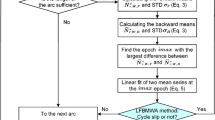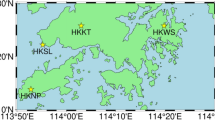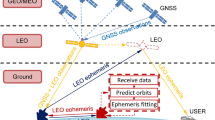Abstract
Geostationary orbit (GEO) satellites are an integral part of the BeiDou Navigation Satellite System (BDS). Precise orbit determination (POD) for GEO satellites is difficult due to their geostationary characteristics. The orbit determination accuracy that can be achieved based on regional tracking stations in China cannot satisfy high-precision service requirements. The third generation of BDS (BDS-3) is the first global navigation satellite system that synergistically uses regional monitoring stations and global intersatellite links (ISLs) to realize global service. In this study, the quality of ISL data is analyzed based on the residuals of the intersatellite clock offset and the observed-minus-computed residuals of the ISL data. The orbit determination accuracy is assessed based on the observation residuals, the multiday consistency of the ISL time delays, overlapping orbit comparison, the user equivalent range error (UERE), and the accuracy of the clock offset. The results show that the ISL measurement noise for the GEO satellites is 3 cm, and the multiday consistency accuracy of the ISL time delay is better than 0.07 ns. Compared to the satellite-to-ground link (SGL)-based orbit determination method, the root mean square (RMS) three-dimensional (3D) position error of the overlapping orbit differences (OODs) is improved from 1.11 to 0.22 m with the combined SGL- and ISL-based method. Simultaneously, the UERE improves from 0.57 to 0.19 m, and the accuracy of the satellite clock offset improves from 1.09 to 0.61 ns.














Similar content being viewed by others
Data availability
Beijing Satellite Navigation Center provides all the test data used in this contribution, including the ISL measurements and the L-band measurements. All data will be made available for scientific research purposes by requesting it from the Beijing Satellite Navigation Center.
References
Chen JP, Hu XG, Tang CP (2016) Orbit determination and time synchronization for new-generation BeiDou satellite: preliminary results. Scientia Sinica (Physica, Mechanica & Astronomica) 46(1):119502
Chen JP et al (2020) SIS accuracy and service performance of the BDS-3 basic system. Sci China Phys Mech Astron 63(6):269511
Fernandez FA (2011) Inter-satellite ranging and inter-satellite communication links for enhancing GNSS satellite broadcast navigation data. Adv Space Res 47(5):786–801
Li XJ, Zhou JH, Guo R (2014) High-precision orbit prediction and error control techniques for COMPASS navigation satellite. Chin Sci Bull 59(23):2841–2849
Li XJ, Guo R, Hu XG, Tang CP, Wu S, Chang ZQ, Liu S (2018a) Construction of a BDSPHERE solar radiation pressure model for BeiDou GEOs at vernal and autumn equinox periods. Adv Space Res 62(7):1717–1727
Li XX, Zhu YT, Zheng K, Yuan YQ, Liu GG, Xiong Y (2020) Precise orbit and clock products of Galileo, BDS and QZSS from MGEX since 2018: comparison and PPP validation. Remote Sens 12(9):23–37
Li XJ, Zhou JH, Hu XG, Liu L, Guo R, Zhou SS (2015) Orbit determination and prediction for BeiDou GEOs at the time of the spring/autumn equinox. Scientia Sinica Physica, Mechanica & Astronomica 58:089501
Li XJ, Hu XG, Guo R, Tang CP, Zhou SS, Liu S, Chen JB (2018b) Orbit and positioning accuracy for the new generation BeiDou satellites during the earth eclipsing period. J Navig 71(5):1–19
Lv Y, Geng T, Zhao QL, Xie X, Zhou R (2020) Initial assessment of BDS-3 preliminary system signal-in-space range error. GPS Solut 24(1):16
Maine KP, Anderson P, Langer J (2003) Crosslinks for the next-generation GPS. IEEE Aerosp Conf 4:1589–1596
Montenbruck O et al (2017) The multi-GNSS experiment (MGEX) of the international GNSS service (IGS) - achievements, prospects and challenges. Adv Space Res 59(7):1671–1697
Pan JY et al (2017) System error calibration for time division multiple access inter-satellite payload of new-generation BeiDou satellites (in Chinese). Chin Sci Bull 62:2671–2679
Pan JY et al (2018) Time synchronization of new-generation BDS satellites using inter-satellite link measurements. Adv Space Res 61:145–153
Revnivykh SG (2012) GLONASS status and modernization. In Proceedings of ION GNSS 2012, Nashville, TN, 3931–3949
Tang CP et al (2016) Improvement of orbit determination accuracy for BeiDou navigation satellite system with two-way satellite time frequency transfer. Adv Space Res 58:1390–1400
Tang CP et al (2018) Initial results of centralized autonomous orbit determination of the new-generation BDS satellites with inter-satellite link measurements. J Geod 92:1155–1169
Yang DN, Yang J, Li G (2017) Globalization Highlight: orbit determination using BeiDou inter-satellite ranging measurements. GPS Solut 21(3):1395–1404
Yang YF, Yang YX, Hu XG, Tang CP, Zhao LQ, Xu JY (2019a) Comparison and analysis of two orbit determination methods for BDS-3 satellites. Acta Geodaetica Et Cartographica Sinica 48(7):831–839
Yang YX, Gao WG, Guo S, Mao Y, Yang YF (2019b) Introduction to BeiDou-3 navigation satellite system. Navigation 66(1):7–18
Yang YF, Yang YX, Hu XG, Chen JP, Guo R, Tang CP, Zhou SS, Zhao LQ, Xu JY (2020) Inter-satellite link enhanced orbit determination for Beidou-3. J Navig 73(1):115–130
Zhou SS, Hu XG, WU B. (2011) Orbit determination and time synchronization for a GEO/IGSO satellite navigation constellation with regional tracking network. Sci China Phys Mech Astron 54(6):1089–1097
Zhou SS et al (2016) Applications of two-way satellite time and frequency transfer in the BeiDou navigation satellite system. Sci China Phys Mech Astron 59(10):109511
Acknowledgements
This work was supported by the National Natural Science Foundation of China (Grant Nos.: 41874043, 41704037, 42004028, and 61603397). We would like to thank the anonymous reviewers for their valuable comments and suggestions, which make our revised manuscript more accurate and clear.
Author information
Authors and Affiliations
Corresponding authors
Additional information
Publisher's Note
Springer Nature remains neutral with regard to jurisdictional claims in published maps and institutional affiliations.
Rights and permissions
Springer Nature or its licensor holds exclusive rights to this article under a publishing agreement with the author(s) or other rightsholder(s); author self-archiving of the accepted manuscript version of this article is solely governed by the terms of such publishing agreement and applicable law.
About this article
Cite this article
Li, X., Hu, X., Guo, R. et al. Precise orbit determination for BDS-3 GEO satellites enhanced by intersatellite links. GPS Solut 27, 8 (2023). https://doi.org/10.1007/s10291-022-01330-3
Received:
Accepted:
Published:
DOI: https://doi.org/10.1007/s10291-022-01330-3




